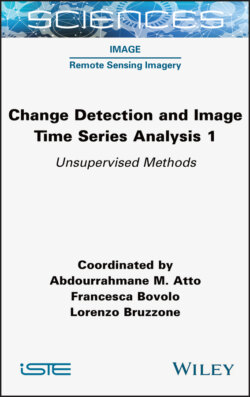Читать книгу Change Detection and Image Time-Series Analysis 1 - Группа авторов - Страница 25
1.3.3.3. Decision fusion-based CD
ОглавлениеThe multiclass CD is implemented based on the change magnitude and direction variables (i.e. ρ and θ) constructed by S2CVA at the superpixel level. In paticular, a decision fusion-based CD step is proposed to enhance and optimize the binary CD output (see Figure 1.5), by analyzing the change magnitude of SCVs-PC bands. Three binary CD results are taken into account based on a majority voting process, to determine whether a given superpixel (segment) is changed or not. The first input is made from the pixel-level binary CD result constrained by the segmented boundaries, where a threshold Tρ is defined on ρ by using the EM algorithm under a Bayesian framework (denoted as Bayesian-EM) (Bruzzone and Prieto 2000a). Change and no-change pixels are counted within each superpixel, respectively, in order to determine the label of that superpixel with respect to the counting majority. The second and third inputs are generated at the superpixel level. The change magnitude of superpixels is calculated on Y', and binary CD results are obtained using Bayesian-EM thresholding and fuzzy c-means (FCM) clustering, respectively. A three-input majority voting decision is applied by integrating three binary CD results from a pixel-to-superpixel perspective. Note that the final binary CD decision is made on each superpixel, depending on the majority label of three independent inputs, as shown in Figure 1.5. FCM clustering is then applied on the variable θ but only focuses on the changed superpixels, with the given estimated number of clusters equal to K in the 2D compressed polar domain D, as shown in Figure 1.2.
